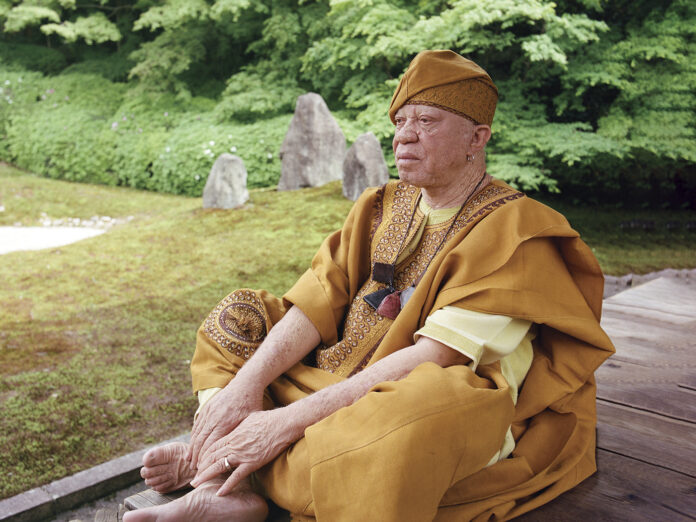Mali might be one of Africa’s poorest nations, but it remains a musical superpower. The centre of the medieval Mande empire has been the breeding ground for dozens of global success stories, including the likes of Toumani Diabate, Ali Farka Toure, Rokia Traore, Oumou Sangare, Fatoumata Diawara, Boubacar Traore, Afel Bocoum, Bassekou Kouyate and Amadou & Mariam – not to mention Tuareg rockers like Tinariwen, Tamikrest and Songhoy Blues.
Mali might be one of Africa’s poorest nations, but it remains a musical superpower. The centre of the medieval Mande empire has been the breeding ground for dozens of global success stories, including the likes of Toumani Diabate, Ali Farka Toure, Rokia Traore, Oumou Sangare, Fatoumata Diawara, Boubacar Traore, Afel Bocoum, Bassekou Kouyate and Amadou & Mariam – not to mention Tuareg rockers like Tinariwen, Tamikrest and Songhoy Blues.
Salif Keita might be the most famous of them all, but he was always the odd one out. Not only was he an albino in a society that regarded albinos as cursed, but he was an outcast from a minor royal family, competing with storytelling griots who tended to come from an ancestral lineage of musicians. It helped that he was blessed with an extraordinary voice. Keita can turn a jerky, conversational, arhythmic lyric into something that flows perfectly; making any amount of syllables fit into whatever space he has, improvising like a jazz singer, adding bluesy flourishes and grace notes, often leaping up an octave or more into a spine-tingling register.
It’s a voice that has worked across multiple genres. He started out in 1970, singing Afro-Cuban son and Congolese soukous with the Rail Band; a few years later he was performing rumbas, foxtrots, French ballads and Senegalese wolof songs with Les Ambassadeurs. In 1987 his breakthrough solo album Soro heralded the birth of the digital griot, setting Keita’s voice against a Peter Gabriel-ish backdrop of sampled koras and digi-drums. Since then he’s collaborated extensively – albums produced by Joe Zawinul, Vernon Reid and Wally Badarou; duets with the likes of Carlos Santana, Wayne Shorter, Grace Jones, Esperanza Spalding, Bobby McFerrin, Roots Manuva, Richard Bona and Cesaria Evora. In 2018 he released Un Autre Blanc – a heavily synthesized, elaborately orchestrated studio album featuring Ladysmith Black Mambazo, Angelique Kidjo and Alpha Blondy – and announced in interviews that, approaching his 70th birthday, it would be his last LP.
That was until 2023, when he was invited to play an unplugged set at a festival in Japan: just voice and acoustic guitar, with occasional accompaniment on the ngoni (a kind of harp-like banjo) and percussion. Keita loved the setting, realising that it brought out a side of him that had been hidden across his five-decade career, and he transformed his hotel suite into an impromptu studio to record this album.
So Kono – which translates as “inside the chamber” in the Mande language – is Keita’s most spartan LP yet. He has always said that he feels self-conscious about his guitar playing, seeing it purely as a tool for songwriting, but here it takes centre stage – hypnotic, complex, repetitive patterns, played clawhammer style, plucked with the flesh at the tips of his fingers, like a medieval lute player, usually with a capo high on the fretboard.
Some of these songs rework older compositions. “Laban”, a piece of desert rock on his 2005 album M’Bemba, is turned into a wonderfully baroque miniature, featuring a Martin Carthy-like guitar pattern. The already quite spartan “Tu Vas Me Manquer” (‘I will miss you’) sounds even more beautifully heartbroken, while “Tassi”, a piece of bubblegum Latin pop from his 2012 LP Talé, is turned into a hypnotic meditation. Occasionally, Keita’s metrical, minimalist guitar patterns are set against the florid, tumbling ngoni flourishes of Badié Tounkara, like on the gentle minor-key waltz “Awa”, which translates as Eve, and serves as Keita’s tribute to womankind; the yearning declaration of love “Cherie”, which also features accompaniment on cello and talking drum; or “Soundiata”, a mesmeric tribute to his royal ancestors.
There are tributes to friends. “Kanté Manfila” is dedicated to a late bandmate of the same name who was in Les Ambassadeurs, while “Aboubakrin” is named after a successful politician. One is a eulogy, the other a joyful song of praise, but both have the same mood – trance-like guitar patterns and soaring vocals that sound a muezzin’s call to prayer.
Most startling of all is the final track “Proud”. Here, instead of playing acoustic guitar, Keita switches to a simbi, a Malian harp-lute, with a bulbous calabash body. He plays a metallic, jangling riff while howling the lyrics – partly in English – at the upper end of his vocal register, half ancient bluesman, half Pakistani qawaali singer. “I’m African, I’m proud,” he howls. “I’m albino, I’m proud/ I’m different, I’m proud.” It’s a fitting summation of a remarkable career.



